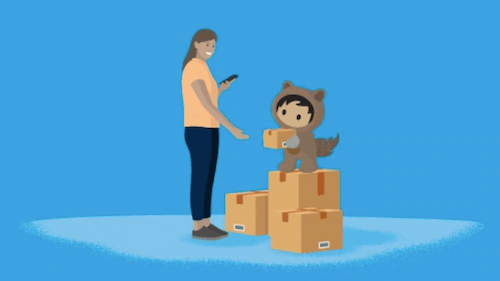The COVID-19 pandemic has permanently shifted the global business landscape. Around the world, customers are choosing online shopping methods rather than in-store purchases. As a result, consumer goods (CG) companies are pursuing direct-to-consumer (D2C) strategies to keep up with the latest market demands.
D2C channels offer unprecedented access to consumer data. This helps CG companies monitor their consumer’s habits and behaviours to build lasting relationships. D2C is part of the future of CG — and 99% of CG leaders say they are already investing in D2C sales.
By leveraging customer-experience data insights, CG brands can develop stronger D2C relationships, new subscription models, and products that resonate with customers. Building direct relationships with customers makes it possible to control each stage of the engagement cycle. Companies need to learn about customer motivations and behaviours at every step of the journey.
In this blog, we share strategies to build D2C relationships and brand loyalty while going direct-to-consumer.
Put the customer at the heart of everything
Make your value proposition about more than your product. Successful companies understand that their consumer experience is their unique value prop. Establish a consumer-first strategy that goes beyond the transactional – connect people with products and experiences that resonate. In return, consumers will reward you for it with repeat purchases and loyalty.
Unlike traditional retailers, CG companies can connect with consumers without the burden of legacy platforms and extra technology.
Research shows that consumers increasingly value specialism. They are economical about what they purchase, crave more authentic brand experiences, and gravitate towards brands that recognise them. Moreover, younger consumers are proving particularly receptive to new D2C brands that directly connect with them through digital channels.
Create 1-2-1 relationships at scale
Access to data across every touch point helps you identify consumers as soon as they visit your site. Make sure to continuously engage them so they keep coming back to your brand.
The best consumer experience, anywhere, is the experience they expect everywhere. For instance, think of global fast-food chains. They deliver the same experience, over and over again. The consumer has a set expectation that’s fulfilled each time they visit the chain and/or brand. As a result, the global fast-food industry has amassed a market share of over €700 billion. But good 2DC relationships are more than just brand consistency.
CG companies can drive engagement by sharing content and customer stories across every channel of engagement. Shared experiences bring consumers closer to your brand. Typically, consistent and personalised engagement resonates the most with consumers.
Everything that you do should support the customer journey. Consider your D2C channel as your hub. Fill it with detailed product descriptions, how-to videos, and trending social photos.
D2C requires a regular cadence of high-quality content for your site, social, email, and SMS channels. Mix product and lifestyle imagery with value-added content. You should consider releasing tutorials and short videos for quick engagement. This works to position your brand as a trusted authority.
Tailor each consumer’s experience with AI
Siloed departments and obtaining a single view of the customer can make personalisation difficult. However, the rewards are significant.
Personalised recommendations yield a 4.5x higher likelihood of creating a shopping cart and a 5x higher per-visit spend. Artificial intelligence (AI) enables brands to personalise ecommerce experiences at scale throughout the consumer journey. It also helps identify nuances and behaviours across touch points while surfacing relevant content that makes consumers more likely to convert.
Differentiate on service
By going D2C, you may need to change your existing service infrastructure to handle more engaging relationships with consumers. Offer shoppers the option to interact with your brand through any channel. This includes SMS, in-person web chat, social media, and more.
Before hiring more service agents, consider this: there are a few simple tweaks you can make that will address the most common consumer requests. Make it easy to find answers to frequently asked questions, like how to initiate a return, by adding a FAQ page on your site. If consumers can’t find what they are looking for, allow them to submit a case through a web-to-case online form.
And chatbots can field your most-asked questions. When a case is more complicated, the bot can escalate it to an agent for additional support. Bots gather consumer information quickly to decrease case handling time, leading to a faster resolution.
To learn how to build a customer-centric experience and boost your D2C relationships, check out our guide to developing direct-to-consumer strategies!




